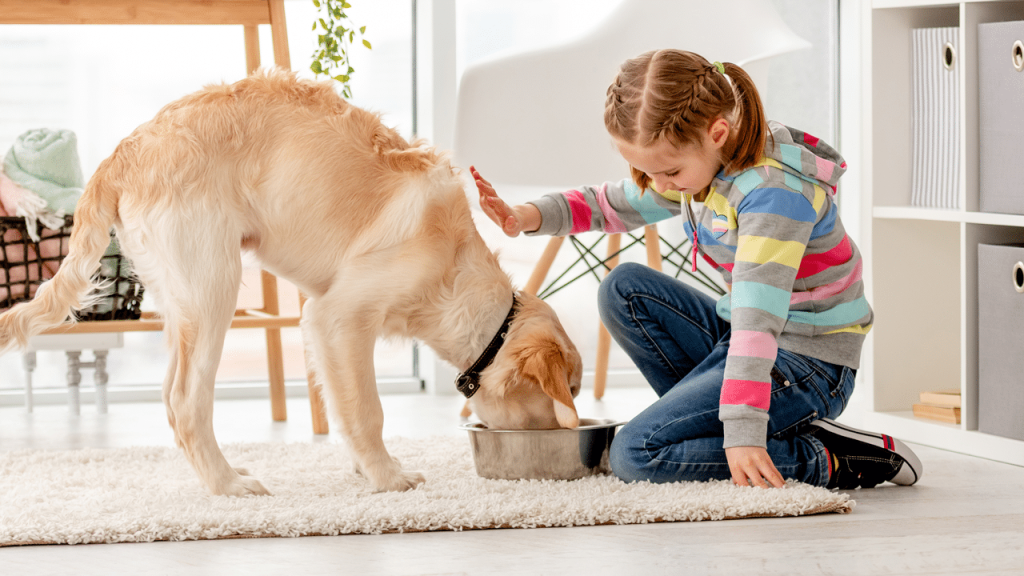When it comes to feeding our dogs, understanding measurements is crucial. One common question that many pet owners ask is, How many cups in a pound of dog food? This simple question can have significant implications for your dog’s health and nutrition. Pet owners often ask how many Cups in a Pound of Dog Food to prevent overfeeding or underfeeding. Calculating the Cups in a Pound of Dog Food simplifies meal planning for pet owners.
In this article, we’ll delve into the details of dog food measurements, including factors that affect these conversions, the importance of accurate feeding, and tips for choosing the right food for your pet. The measurement of Cups in a Pound of Dog Food can vary depending on the type and brand of food.
For more information, explore this ultimate guide on canine food allergies.
Why Measuring Cups in a Pound of Dog Food Matters for Nutrition
Understanding Weight vs. Volume
Dog food is typically measured by weight (pounds or kilograms) when sold, but we often serve it by volume (cups). Generally, one pound of dry dog food is estimated to equal about 4 to 5 cups. However, this measurement can vary based on several factors, including the type of food, its density, and even the kibble’s shape and size. Knowing the Cups in a Pound of Dog Food food helps ensure your dog receives balanced nutrition.
Factors Influencing Measurement
Type of Dog Food: The most significant factor is the type of food. Dry kibble, wet food, and semi-moist foods all have different densities. Dry kibble generally falls within the range of 4 to 5 cups per pound, while wet food is often sold by weight in cans or pouches and typically not measured in cups.
Kibble Size and Shape: Smaller kibble pieces may pack more tightly into a cup than larger pieces. Therefore, a pound of small kibble may yield more cups than a pound of larger kibble.
Brand Variations: Each dog food brand may have its unique formulation. Some brands may use denser ingredients, resulting in fewer cups per pound. Always refer to the specific dog food’s packaging for the most accurate measurements.
Moisture Content: The moisture level in dog food can affect its weight. For instance, high-moisture foods may seem lighter, impacting the cup count about weight.
Why Accurate Measurements Matter
Accurate measurements are crucial for your dog’s health. Here are several reasons why:
- Weight Management: Overfeeding can lead to obesity, which is a common issue among pets. Accurate measurements help prevent this by ensuring you’re providing the correct portion size based on your dog’s needs.
- Nutritional Balance: Dogs require specific nutrients for optimal health. By measuring their food accurately, you can help ensure they receive the right balance of proteins, fats, carbohydrates, vitamins, and minerals.
- Feeding Guidelines: Many dog food brands provide feeding guidelines based on your dog’s weight, age, and activity level. Understanding how many cups are in a pound helps you follow these recommendations effectively.
Practical Tips for Feeding Your Dog

Use a Kitchen Scale: While measuring cups provide a rough estimate, a kitchen scale offers more precision. Weigh your dog food in pounds to ensure you’re serving the correct amount.
Follow Brand Guidelines: Always refer to the feeding guidelines provided on the dog food packaging. These guidelines will help you determine the appropriate daily intake based on your dog’s specific needs.
Adjust for Activity Level: Your dog’s activity level will also dictate how much food they need. Active dogs may require more calories, while less active dogs may need less.
Monitor Weight Regularly: Keep an eye on your dog’s weight and overall health. If you notice significant weight changes, consult your veterinarian to discuss adjustments to your diet.
Make Gradual Changes: If you need to switch dog foods, do so gradually over a week. Mixing the new food with the old can prevent digestive upset.
Choosing the Right Dog Food
When it comes to dog food, quality matters. Here are key factors to consider when selecting the best food for your pet:
Nutritional Value
Look for dog food with high-quality ingredients. The first ingredient should ideally be a named meat source, such as chicken or beef. A good dog food should also provide a balance of proteins, fats, carbohydrates, vitamins, and minerals. Always check for an Association of American Feed Control Officials (AAFCO) statement on the packaging, which indicates that the food meets basic nutritional standards.
Life Stage and Size
Consider your dog’s life stage (puppy, adult, senior) and size (small, medium, large). Different life stages have distinct nutritional requirements. For example, puppies need more protein and fat than adult dogs, while senior dogs may require fewer calories and specific nutrients to support aging.
Allergies and Sensitivities
If your dog has allergies or sensitivities to certain ingredients (like grains or specific proteins), be sure to choose a food that accommodates these needs. Consult your veterinarian for recommendations on appropriate diets.
Brand Reputation
Research brands before making a purchase. Read reviews and look for transparency in sourcing ingredients. A reputable brand will have a commitment to quality and customer satisfaction.
Calculating Portions Based on Weight
To ensure you’re feeding your dog correctly, it’s important to calculate their food portions based on their weight and needs. Here’s a simple approach to help you determine how much food to serve:
Identify Your Dog’s Weight: Start by weighing your dog or checking their weight with your veterinarian.
Check the Feeding Guidelines: Look at the dog food packaging for recommended serving sizes based on your dog’s weight.
Convert Pounds to Cups: Use the 4 to 5 cups per pound estimate to calculate how many cups your dog should receive each day based on their weight and the food’s density.
Split Daily Portions: Divide the total daily portion into two or three meals, depending on your dog’s preference and routine.
Monitoring Your Dog’s Health
Once you have established a feeding routine, it’s essential to monitor your dog’s health and adjust as needed. To maintain your dog’s health, it’s important to measure Cups in a Pound of Dog Food accurately. Here are some signs to watch for:
- Weight Fluctuations: Regularly weigh your dog to ensure they’re maintaining a healthy weight. A sudden gain or loss can indicate dietary issues or health problems.
- Energy Levels: Pay attention to your dog’s energy levels. If they seem lethargic or overly active, their food intake may need adjustment.
- Coat Condition: A healthy coat often reflects a balanced diet. If your dog’s coat appears dull or flaky, it might be time to reconsider their food.
- Digestive Health: Monitor your dog’s stool for consistency. Any significant changes in bowel movements could signal dietary issues or the need for a different food.
For further details, feel free to check out this helpful resource.
Conclusion
Understanding how many cups are in a pound of dog food is crucial for responsible pet ownership. By accurately measuring your dog’s food, you ensure they receive the right nutrition, maintain a healthy weight, and enjoy a long, happy life. To maintain your dog’s health, it’s important to measure Cups in a Pound of Dog Food accurately. Calculating the Cups in a Pound of Dog Food simplifies meal planning for pet owners.
Always consult with your veterinarian to tailor a feeding plan that suits your dog’s specific needs. Feeding practices combined with quality nutrition form the foundation of your dog’s health. The right number of Cups in a Pound of Dog Food ensures your pet gets the correct daily calorie intake. By being diligent in your measurements and mindful of your dog’s unique requirements, you can provide the best care possible. Happy feeding!

